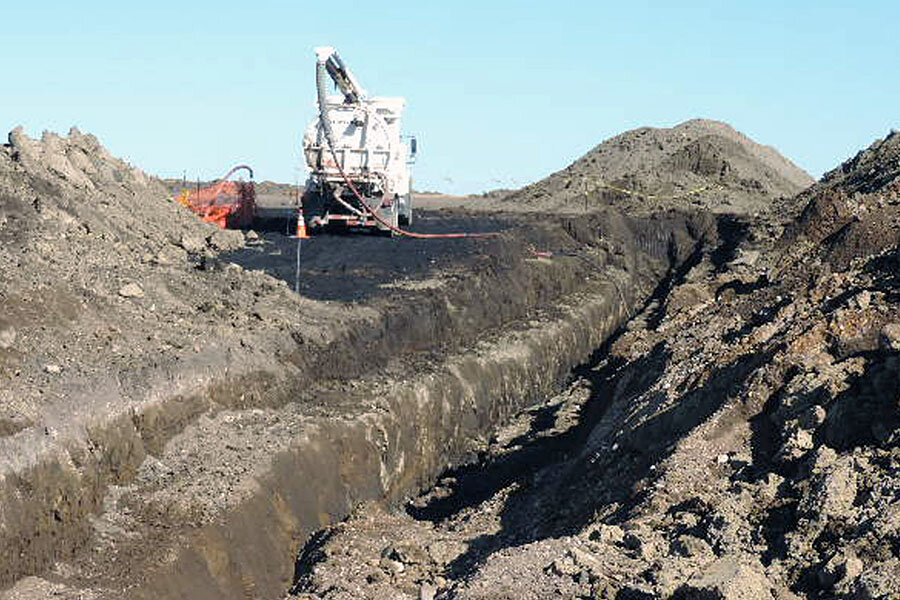With North Dakota oil boom comes concern over spills
Loading...
North Dakota Gov. Jack Dalrymple says he wants to vastly expand the oil pipeline capacity in his state. With oil production churning along at 1 million barrels per day, the boom may spark concerns about pipeline spills.
The state’s Department of Mineral Resources said total output in North Dakota averaged just over one million barrels per day in April – the most recent data available – which is an all-time high for the state and marks the first time that production has topped the 1 million bpd mark.
That’s more than the state pipeline capacity, which now stands at 780,000 bpd. Darymple says he wants it to be 1.4 million bpd by 2016.
But more oil inevitably brings more environmental worries. Right now, rail is making up for the lack of sufficient pipeline capacity to deal with the glut of oil from shale. But rail's safety record has been brought into serious question after several derailments, including last year’s deadly oil train accident in Lac-Megantic, Quebec. Regulators in Canada and the United States are imposing tough new regulations on rail transport.
Friends of the Headwaters, a grassroots group established to keep tabs on North Dakota pipelines, say that, by a factor of 10 to 1, they've found pipelines spill more oil than rail and truck combined. And while both rail and pipeline companies say they're putting safety first, the group says safety standards may be set too low.
Paul Fisher, a vice president for regional pipelines at Enbridge, has conceded that public trust needs to be restored. He should know: An Enbridge spill in southern Michigan tops the list as the largest inland pipeline spills in US history.
Line 6b of the Lakehead oil pipeline system burst open July 26, 2010. A report from the National Transportation Safety Board found that Canadian operators misinterpreted a pressure drop in the line in Michigan and continued pumping oil through the line after it broke open, spilling nearly 21,000 barrels of oil. (Related Article: Safety Concerns Mount As Rail Shipments Of Oil Grow)
Other major spills:
Tesoro Logistics issued a press release in October, 2013 to inform the world that 20,600 barrels of oil had spilled in rural Tioga, N.D.
Residents in a suburban neighborhood in Arkansas woke up to find oil flowing through their quiet streets in March 2013. The Mayflower pipeline, operated by Exxon Mobile, burst open, dumping as much as 5,000 barrels of heavy crude oil from Canada in the region. The state of Arkansas is seeking civil penalties from Exxon for alleged violations of federal and state environmental laws.
Raging floodwaters in the Yellowstone River ripped open the Silvertip pipeline in Montana in July 2011. The leak washed 1,500 barrels of crude oil into the river. A federal report on the incident said the immediate cause of the rupture was because floodwaters exposed the pipeline. Exxon operators, however, left the line open for another 46 minutes before shutting it down.
Enbridge Inc. shut down part of its Athabasca Pipeline system in 2012 after a leak of about 1,400 barrels in Alberta.
Authorities in North Dakota recently gave Enbridge approval to start building its Sandpiper crude oil pipeline to service the Bakken play. The 616-mile line would have the capacity to send 225,000 bpd to the US and Canadian refinery markets. Its developers say it would carry the equivalent of 2,000 rail cars per day of oil.
For a group like Friends of the Headwater, pipeline or rail may seem like a choice between two poisons.







